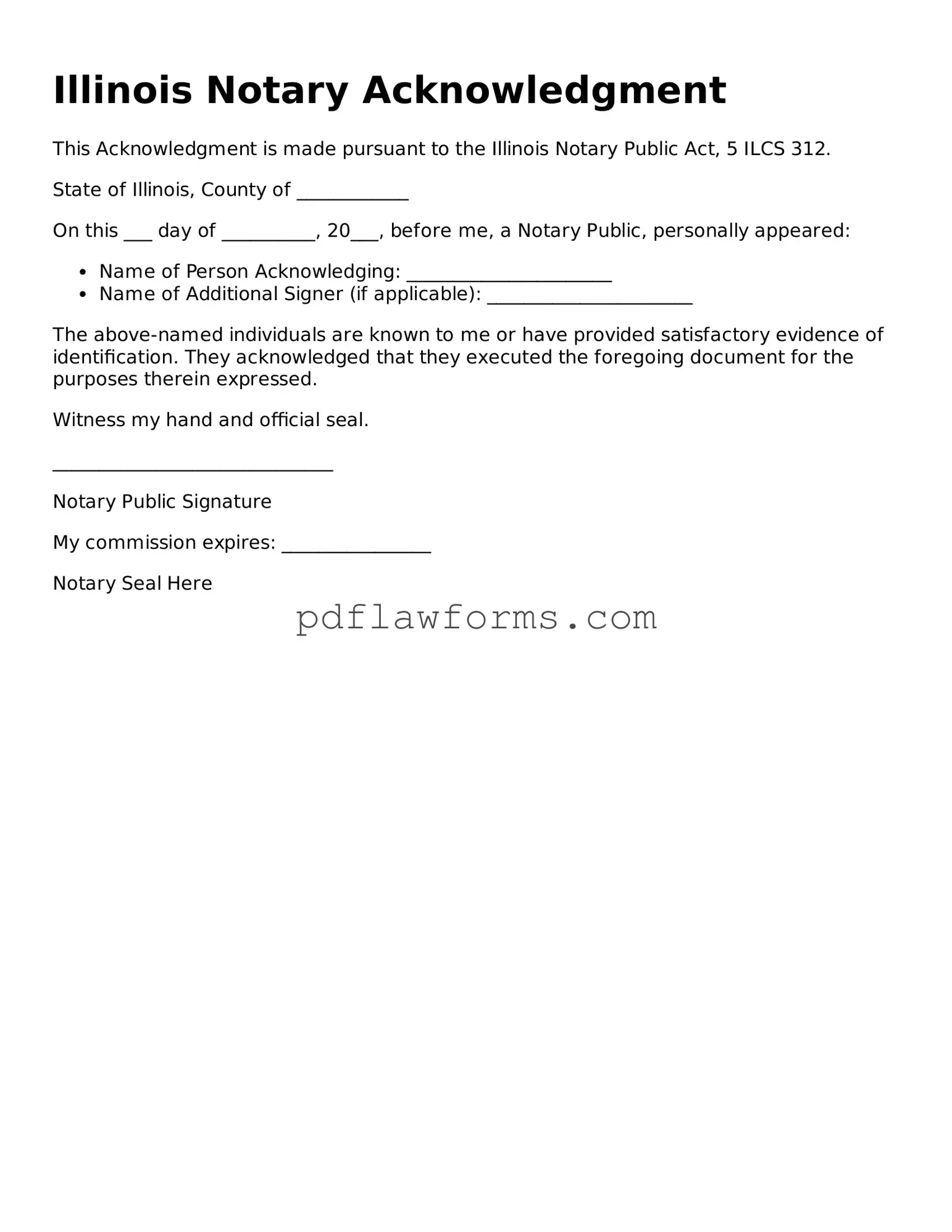Filling out the Illinois Notary Acknowledgment form can seem straightforward, but many individuals make common mistakes that can lead to delays or complications. One prevalent error is failing to include the correct date. The acknowledgment must reflect the date on which the notary is signing. If this date is missing or incorrect, it can invalidate the document.
Another frequent mistake is not providing the signer's name as it appears on their identification. The notary must ensure that the name matches the ID presented by the signer. Discrepancies can raise questions about the authenticity of the acknowledgment.
People often overlook the requirement for the signer's signature. Acknowledgments must include the actual signature of the person whose document is being notarized. If the signature is missing, the acknowledgment is incomplete and cannot be accepted.
Additionally, some individuals neglect to indicate the type of document being acknowledged. The form should specify what is being notarized. Without this information, it can be difficult to determine the purpose of the acknowledgment, potentially leading to confusion or disputes later on.
Another common error involves the notary's own signature and seal. The notary must sign and affix their seal in the designated area of the form. If either is missing, the acknowledgment will not be legally valid.
It's also important to ensure that the notary is properly commissioned. Some individuals mistakenly use forms when the notary's commission has expired. Always check that the notary is currently authorized to perform their duties.
In some cases, people fail to provide the correct jurisdiction. The acknowledgment must specify where the notarization takes place. Omitting this information can lead to questions about the legitimacy of the notarization.
Lastly, individuals may rush through the process without double-checking their work. Taking the time to review each section of the form can prevent many of the mistakes mentioned above. A careful approach ensures that the acknowledgment is completed correctly and serves its intended purpose.
